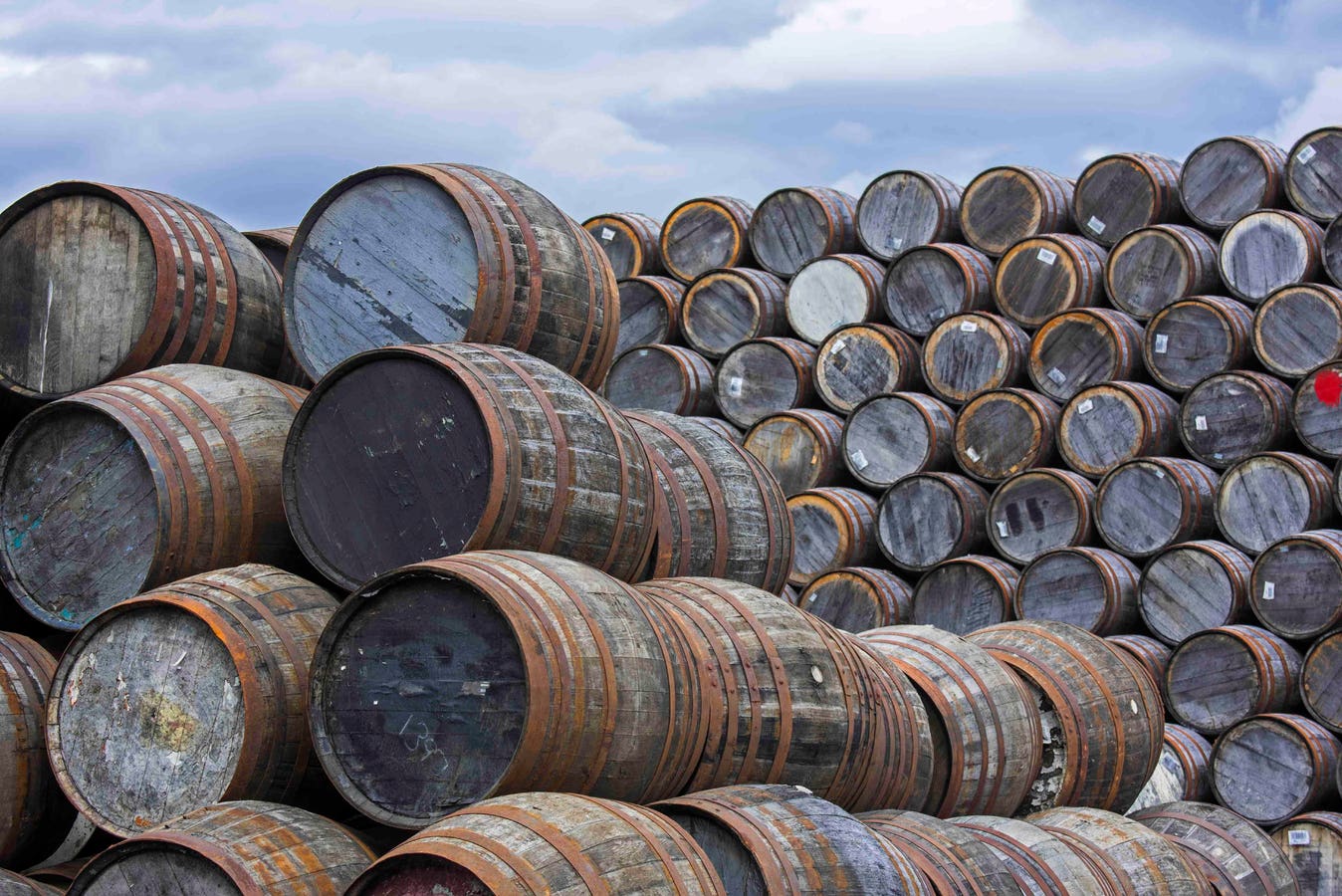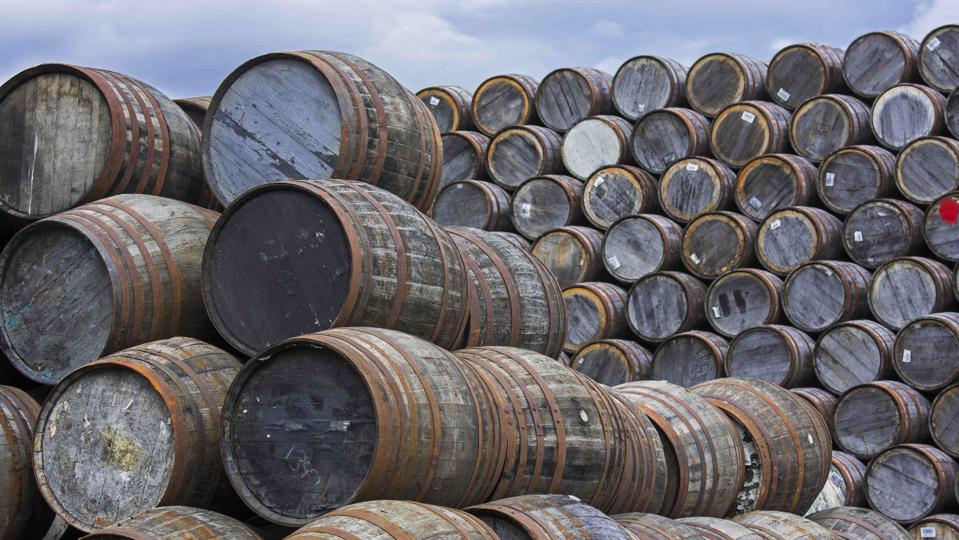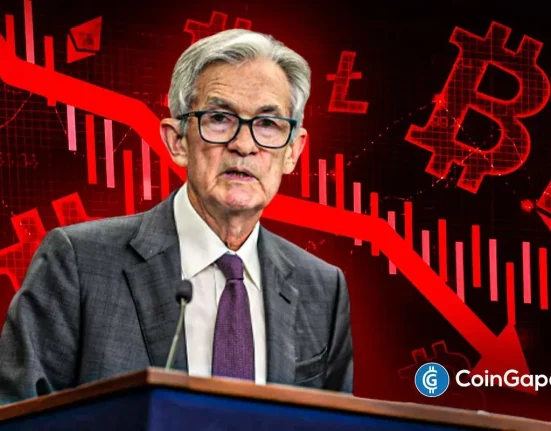Scotch whisky cask investment scams today resemble those of the past. (Photo by: Philippe … More
In an article on the blog of whisky retailer Master of Malt, former Diageo executive, archivist and whisky historian Dr. Nick Morgan provides examples of promises made by Scotch whisky cask investment firms to the general public: “15 – 30% capital growth per annum”; “in four years your matured whisky may double in value”; “malt whisky investment shows an average profit of 50% at maturity.”
They sound awfully similar to ads from Scotch whisky cask investment companies that I’ve come across too:
“Cask whisky saw 15.86% growth in 2022”; “12% typical annual returns”, “36.3% return in 3 years”, “a strong asset with the potential for significant capital appreciation”
The difference? Morgan’s examples are from the late 1960s and 1970s, when prospective investors not involved with the whisky industry were lured into investing into whisky casks – and fell for schemes where all their money was lost.
My examples come from Scotch whisky cask investment ads that have shown up on my social media feed within the last year.
All these promises past and present form part a pattern that repeats itself every 25 years and it has a familiar script – a new crop of upstart companies enter the whisky industry and tell prospective whisky investors unfamiliar with the market that putting money into Scotch whisky casks will deliver high profits at low risk.
The reality is much different. The majority of investors who put their money into such schemes in the past lost everything or were left with casks not worth nearly the value that they were promised. It happened in the 1970s, in the late 1990s/early 2000s, and it’s starting to happen again now.
However, thanks to new technology and social media the scale at which the current crop of Scotch whisky cask investment firms operates is truly impressive. Morgan warned me that he believes that the dangers of fraud are larger than ever: “Compared to the previous two [periods where scams took place], if they were waves, this is a tsunami. The danger that this threat poses to the reputation of the whole industry is immense.”
How past whisky cask investment scams worked
A court case from 1973, SEC v. Haffenden-Rimar International, involved defendants charged with selling unlicensed securities under the guise of whisky investments. Investors were told their money would grow as the whisky aged—but many of the casks either didn’t exist or had been misrepresented.
The scam resurfaced in the late 1990s and early 2000s with companies like Hamilton Spirit Management and Marshall Wineries. These firms used phone sales and print ads to attract investors, promoting casks at heavily marked-up prices and assuring buyers of strong, reliable returns. These casks were often resold multiple times, and when the companies went under, most investors were left with nothing.
The promises made to investors today—steady growth, strong returns, a tangible asset—haven’t changed for decades. The pillars of how these scams work – either by overcharging for casks and/or not actually providing proper ownership over a cask – remains the same.
Morgan sees clear similarities to today: “Relentless high-pressure sales techniques, inflated promises in terms of return and security of your investment and vastly inflated prices”, he noted, “this is the same palette of sharp practices that was employed 40 or 50 years ago and 20 or 25 years ago is the same one that’s been deployed today, but at a higher technological level.”
Indeed, the BBC’s groundbreaking investigative show and podcast series about whisky cask investment scams, both titled Hunting the Whisky Bandits, revealed how three different firms, Cask Whisky Ltd, Cask Spirits Global Ltd, and Whisky Scotland, recently collapsed after having done the exact same thing to their clients.
How have Scotch whisky cask investment schemes changed?
It’s not about cold calls or a reliance on classified ads in the investment sections of newspapers and magazines anymore (though this is also happening today, through ads and sponsored content placed in mainstream publications).
Laurence Cook is a producer who worked and was deeply involved with Hunting The Whisky Bandits. In a webinar interview with ProtectYourCask.com, a consumer protection website I co-founded, he emphasized how today’s scammers use digital tools to broaden their reach and sharpen their approach. “These are people that can build slick websites, slick social media profiles. They’re people that are committed to creating content that is targeted.”
This expanded reach is translating into significantly more victims. Cook described the process of finding burned investors when he started investigative work for the series:
“There was an incredible human story in this, which was a lot of people had been exploited by a group of people, a fairly large group of people, working with kind of impunity and that was something worth looking into”, he said.
“We immediately knew was that the scale of this was massive. And secondly, as soon as the team began reaching out to victims, and we started finding people all over the place and in of infinite variety in terms of backgrounds and amounts that they’d invested, we also just found huge numbers of victims.”
Though his series and podcast only focuses on three firms, Cook is sure that this is just the tip of the iceberg and there are many others operating in the same way today as well.
Recycled Scams
Over the course of his investigation, Cook and his team discovered that at least a few current operators may have been new to cask whisky investment, but aren’t new to scam work. He makes chillingly clear the kinds of people who are often involved in this sector:
“It’s fairly obvious, once you start digging on a few of them, that there were links to previous commodity scams, you know, be that wine, gold, art, whatever, and that these were people working in with an MO basically of sell a asset that you you tell the customer is a tangible thing that will go up in value, but it’s tangible, but they shouldn’t touch it. It’s taking storage”, he explains.
“Fine wine was a kind of common denominator across a lot of the people that we looked at. Or they previously had been involved in property abroad, things that basically you have to take on trust in terms of the scale of customers and the scale of loss.”
That model, selling an asset that’s technically tangible but somewhat out of reach, works well with whisky. Investors usually don’t see the casks they supposedly own. If purchasing through a middleman like a cask investment firm, they don’t even necessarily safely own them unless they receive a document called a delivery order, which provides real legal proof of ownership under U.K. law. (Technically, clear contact between warehouse and cask owner fulfills that legal ownership requirement, but a D.O. is the industry standard). So far, these are hardly ever actually provided by most Scotch whisky cask investment firms.
For those affected, the damage isn’t just financial. As Cook pointed out during our webinar, “We found people who hadn’t told their families the true scale of the loss. We found people who are contemplated taking their own lives. We found people who would talk to us for background conversations, but wouldn’t talk on air because of the shame that they felt.”
What all whisky cask investment scammers want
There’s a reason similar tactics have been used by Scotch whisky cask investment firms from the past and present – their goal has been the same.
It is to develop a kind of product that provides them with a profit – and it’s not whisky. That is just the lure. The money-making product are investors unfamiliar with the industry who can be squeezed for their cash, using both legal (but ethically suspect) and sometimes illegal means. These investors can be overcharged for casks, and regularly enticed with new products once they are in the sales database of the firm that brought them in. In today’s Scotch whisky cask investment ‘ecosystems’, they can even sell to each other with the middleman cask investment firm facilitating the sale between its two clients, arbitrarily determining sale price and then taking a slice of the resulting transaction.
If whisky was the product these firms were offering, and if they truly believed that a fortune can be made from it, then they should be bottling and selling whisky themselves. However, the truth – as any independent whisky bottler will tell you – is that this is actually incredibly hard work. It requires the nous to run a good business, to understand your consumer and your markets, to understand the true industry price of casks, to have the contacts to find genuinely tasty ones, and plenty more besides.
It’s easier to set up a whisky cask investment firm marketing overpriced, mediocre casks to the general public. However, to keep this kind of operation going requires aggressive sales tactics, slick marketing, and constantly bringing in new prospective clients. The business models of many of these firms resemble and blend together two different types of venerable scam business models – boiler rooms and pyramid schemes. Little wonder it all feels familiar to Morgan: “What they’re doing is absolutely identical. The key difference is social media and technology.”








